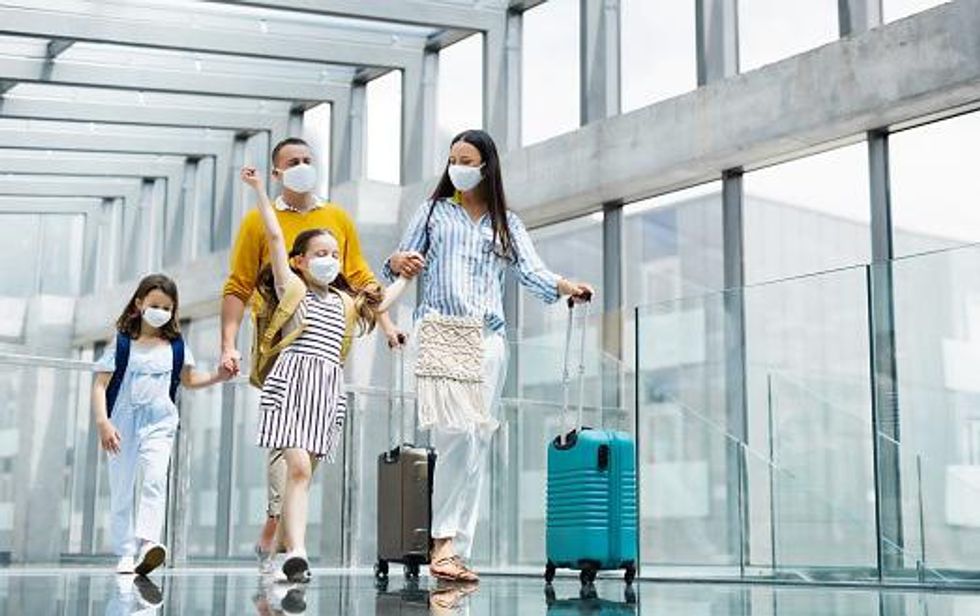Whether it's sipping a drink poolside in Ibiza or exploring the ancient Greek ruins in Athens, eating your weight in gelato in Rome, or strolling through an art gallery in Berlin, many of us are dreaming about escaping to Europe right about now…
However, don't forget about the most important thing to actually get there: travel planning!Traveling is already stressful enough, but doing so during the ongoing pandemic comes with a whole new set of worries. PCR tests, additional forms, keeping up with the ever-changing entry requirements … all of it is enough to make even the most jetsetting traveler a little anxious!
Luckily, that's what this guide is for. This post will go through some of the most important tips when planning a trip to Europe, including extra requirements to keep in mind (such as the Spain FCS form!), practical travel tips, and much more.
Step 1: Check Each Country Individually
Although there are currently 27 member states in the European Union, each one has its own individual rules and regulations when it comes to traveling during the coronavirus.
For example, a country may only let travelers from certain countries enter (usually those with a lower epidemiological risk). Some countries, like France, have a traffic light system that divides tourists into green, orange, and red lists. This depends on which country the person is traveling from, and each list has its own requirements.
The easiest way to find out a country's requirements is to check their official health or immigration website, or your country's embassy site. For example, those planning a trip to Malta can learn about current entry requirements on Malta's Ministry for Health website. Your country's embassy can also be a good source of information (especially for domestic restrictions and information on PCR testing), such as the U.S. Embassy in Malta site.
It's important to constantly pay attention to these sites (especially a few days before your trip!), as the epidemiological situation may change quickly and, therefore, countries may enact new restrictions in the blink of an eye.
Planning to transit through a country onto your final destination? Don't forget to check entry requirements for transit passengers as well, because some countries have different rules. For example, Germany used to require PCR tests for anyone who was planning to enter the country, but this rule didn't apply for travelers who were simply transiting onto their final destination.
Step 2: Have the Necessary Paperwork
In order to streamline arrivals and make sure visitors (and locals) are safe and healthy, many countries have enacted additional requirements for incoming travelers. This is typically in the form of a mobile application, a passenger locator form, or travel identification code.
One of the most common entry requirements (especially in European Union countries) is a passenger locator form.
This form goes by different names, such as the FCS form (Formulario de Control Sanitario) in Spain or the Digital Passenger Locator Form in Italy, but it has the same basic purpose.
Travelers must complete the country's respective travel health form before they are allowed to enter. The form works by having travelers fill in their contact information, such as their full name, passport information, flight information, and contact details. This is to help control the spread of the coronavirus, and in case a fellow passenger gets sick, is an easy way to locate those who came in contact with them.
Once the form is filled out, travelers will typically get a QR code and/or will be required to show their completed passenger form to the immigration authorities.
Another important piece of paperwork to keep on hand is your vaccination certificate (if you've been vaccinated already) or another form of proof that you do not have coronavirus.
This is because many countries have started to implement additional measures to enter establishments like cafes, restaurants, shopping malls, and tourist attractions, among others. Typically, this involves either showing a vaccination certificate, a recent PCR test, or proof of recovery from coronavirus.
Step 3: Buy Insurance
An important rule of thumb before any trip is to buy travel insurance, and this is no exception!
Besides being prepared for any unexpected situations, many countries now require travelers to have mandatory insurance that covers coronavirus-related treatment.
Step 4: Stay Safe and Follow Hygiene Guidelines
Last but certainly not least, be sure to follow basic health and safety guidelines when sightseeing and enjoying your new country. Typically, these are things like keeping a safe distance, using contactless payment when possible, and wearing a mask.
Some countries may enforce other hygiene guidelines not listed above, which is why it's important to double-check before your trip.
By keeping these tips in mind, you can enjoy a stress-free and fun vacation, even when traveling during a pandemic!






 StableDiffusion
StableDiffusion Photo by
Photo by  Photo by
Photo by 
 full parking
StableDiffusion
full parking
StableDiffusion





